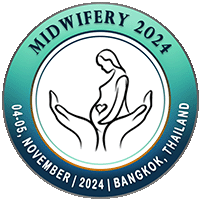
Dipti Das
AIIMS, IndiaTitle: A Study to Assess the Occurrence and Factors of Maternal Near-Miss Among Women Admitted in Maternity Unit in Selected Hospital of Kolkata
Abstract
Background: Motherhood is precious gift and it represents a time of great change that challenges women in many ways they have never experienced. Maternal mortality is one of the important indicators of maternal health. As maternal mortality is a rare event, it is important to study maternal near-miss as a complement to evaluate and improve the quality of obstetric care. A maternal near-miss is an event in which a woman comes close to the maternal death, but survives. So, the study aimed to determine the magnitude as well as to identify factors of maternal near-miss among women admitted in maternity unit.
Methods: A descriptive survey is carried out among purposively selected women admitted in the maternity unit of two tertiary hospitals of Kolkata. Data are collected by face-to-face interview using valid and reliable semi-structured interview schedule to identify factors of maternal near-miss. WHO selected maternal near-miss proforma (2011) is used for assessment of occurrence of maternal near-miss by using record analysis.
Results: The occurrence of maternal near-miss is identified as 100 out of 1669 women admitted in maternity unit. Eclampsia occurred maximum (27%) followed by severe pre-eclampsia (19%), severe PPH (6%) among potentially life-threatening conditions. Multigravida (65%), multipara (54%), non-booked cases (5%), duration of labour more than 18 hours (65%), caesarean section (78%), referred cases (79%), maternal type 1 delay (53%) and type 2 delay (67%) all are the factors mainly responsible for developing maternal near-miss. Significant association present between reproductive and obstetrical factors and maternal education, marital age (p<0.01). Significant association is also present between maternal delay factors and residence, maternal education, monthly family income, marital age (p<0.01).
Conclusions: Exploring the factors of maternal near-miss may help to identify the factors early, which in turn will prevent the condition. Lesson can be learned from cases of near-miss which can serve as a useful tool in reducing maternal mortality ratio.
Biography
Dipti Das has completed her MSc Nursing from R. G. Kar Medical College and Hospital, Kolkata, India. She is the Clinical Instructor at College of Nursing, AIIMS Patna, Bihar, India. She has more than six years of professional experiences as a Nursing officer, Senior Nursing officer and Sister in-Charge in the clinical field.

